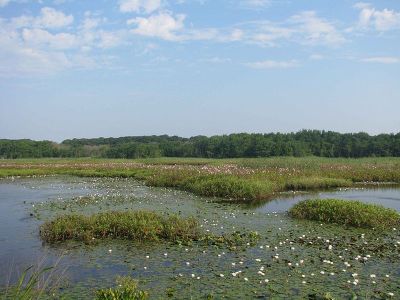Tracing heavy metals in surface waters

Surface waters, fot. public domain
Human activities have strongly modified the biogeochemical cycles of metallic trace elements (MTEs) increasing their fluxes towards and between surface environments. New isotope data has fostered better models of MTE sources, transfer and reactivities in dynamic and multi-sources systems, as required for targeting emission controlled strategies to combat origins and consequences of metal contamination.
The Gironde Watershed and Estuary (France) have served as a test case for the EU-funded project ISOGIRE. The research team studied heavy stable isotopes of copper (Cu), zinc (Zn) and silver (Ag) to get a handle on their biogeochemical reactivity, sources and evolution over time in this fluvial-estuarine system affected by intensive wine production, urbanisation and resilience of contamination from former metal refining activities. Ag was of interest as isotopic studies of it are limited but could be useful in addressing rising Ag concentrations in surface waters and organisms. This phenomenon could possibly be linked to increased use of Ag nanoparticles in consumer goods, making Ag an emerging contaminant.
ISOGIRE results revealed transient Cu isotopic signals in the freshwater reach of the estuary, related to a Cu enrichment and a preferential uptake of light isotopes by the phytoplankton, with possible transposition of anthropogenic Cu signatures. The mineralisation of organic matter in the estuary leads to a continuous addition of dissolved Cu characterised by the release of heavy isotopes in solution, following a Rayleigh process. In contrast, Zn showed a strong adsorption onto particles of the estuarine turbidity maxima, featured by an enrichment of heavy Zn isotopes in the dissolved phase. Given the same trend in worldwide river data, adsorption onto particles could be the main driver of the isotopic composition of dissolved Zn globally.
Metal isotopic signatures in oysters at the estuary mouth provided new constraints for their use in biomonitoring studies. Specifically, the unchanging isotopic signatures of Cu, Zn and Ag over a more than 30-year time frame, suggest that the estuarine biogeochemical reactivity rather than the temporal evolutions of environmental sources in the Gironde Watershed is prevalent at explaining isotopic compositions of bioaccumulated metals.
Finally, the study was able to discriminate between natural and anthropogenic sources of Cu and Zn on the basis of isotopic signatures in the watershed and showed contrasting biogeochemical reactivities and isotopic fractionation mechanisms in the estuarine waters. However, they also pointed to the limited use of isotopic Ag to trace nano-Ag at this point, unless industry is encouraged to label nanoparticles with one of the heavy or light Ag isotopes.
New isotopic data on Ag, Cu and Zn have successfully led to new models for interpreting geochemical and isotopic variations in river and estuary systems and in local organisms. These models will support better coastal pollution assessments and more effective policies to reduce contamination and threats to the environment and public health.
published: 2015-05-15